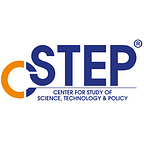Unchained Melody: Beating Research Blues with Free Geospatial Data
By Pareexit Chauhan.
In 2017, we were working on a solar-rooftop-analysis project for the city of Bengaluru, for which we needed extensive aerial imagery. Of the one year we spent on designing and executing the entire project, nine months were consumed by the data acquisition process!
The data policy for the geospatial sector then mandated that we take permissions from various government authorities like the Union Defence and Home Ministries. We couldn’t capture the data directly. I remember that our data-collection partner for the project had to take permissions from each of the 10 concerned authorities, which eventually lead to a no-cost extension of the project.
However, with the new policy on the sector being released in February this year, the scene looks brighter. Liberalising the norms that govern the acquisition and production of geospatial data, the policy paves the way for a level-playing field for public and private entities, while boosting innovation. It will also invigorate research and development projects that today rely heavily on the geographic information system (GIS).
While data has been playing an important role in the decisions organisations and individuals make on a daily basis, spatial analytics now form the pivot for decision making for many. There can be little disagreement on how GIS data is spearheading the mammoth COVID-19 vaccine drive in the country.
The role of GIS in research
In research especially, data takes centre stage almost always. Today, use of GIS-based technology at all levels of the project — from design to data collection and management, analysis, mapping and visualisation, storytelling and public engagement, to creating and measuring impact — is indispensable.
Changes in industries, communities, and the environment are expected as the human population grows. Spatial data is needed to fully understand why and how changes are happening, as well as to help forecast future developments while mitigating the associated challenges. Thus, GIS helps unlock insights, observe patterns, and study relationships on the basis of spatial data. For example, analysing the soil characteristics at different places can lead to an increase in food production; maps with updated granular data can provide more accurate and optimised routes for travel. Similary, researchers can use satellite data to study how the ice cover in polar regions has changed over time.
Additionally, location-based research aided by spatial data helps decision-makers understand why strategies that work in one place frequently fail in some other.
Weeding out delays, spurring rigour in research
The new policy, by doing away with the archaic limitations, eliminates delays and eases geospatial data collection, making way for timely and robust research outputs. Researchers can now use this data to enhance resource planning and management for national capital projects, industrial corridor development, adoption of smart power systems, and humanitarian relief analysis. The uninterrupted access to comprehensive, highly reliable, granular, and constantly-updated geospatial data will galvanise researchers from all fields to produce highly useful research outputs like maps, location-based applications, etc., to aid better decision making.
Further, by providing opportunities to leverage the modern geospatial technology more effectively, the policy is set to drive domestic innovations, and enable Indian researchers and think tanks to make a mark on the global mapping scene.
GIS, research, and the big picture
With goals to build 100 smart cities, improve delivery of social benefits to the poor, tackle natural disasters swiftly, and build infrastructure in remote areas — all requiring extensive quality research inputs — India is aiming to become a true data economy.
However, to accomplish this, and to fulfil its aspiration of growing into a $5 trillion economy in a self-sufficient or ‘Atmanirbhar’ mode, leveraging the digital advancements through a supportive geospatial policy regime is key. The new policy is a powerful step in this direction.
The author is a Senior GIS Analyst in the Computational Tools team at the Center for Study of Science, Technology and Policy (CSTEP), a research-based think tank.
